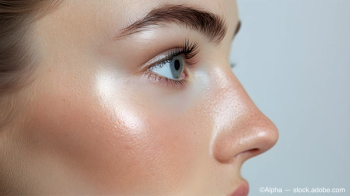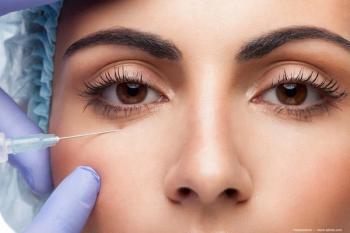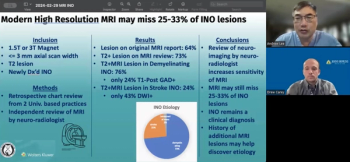
Pre- and post-thermal pulsation
Patients deserve to have their tear film stabilized before surgery so their vision will be optimized after surgery.
Editor’s Note: Welcome to “
I perform a lot of thermal pulsation therapy in patients undergoing cataract surgery. I feel strongly that these patients deserve to have their tear film stabilized before surgery so their vision will be optimized after surgery. In my last post, I discussed how thermal pulsation therapy can change surgical planning and outcomes. But even knowing that, many surgeons still struggle with how to talk about meibomian gland dysfunction (MGD) and MGD treatment in the context of cataract surgery.
What has helped me tremendously in educating patients are the meibography images from the
When the drop-out is dramatic (Figure 1), it is an easy discussion with the patient. However, I take a different approach when the glands look normal. I review the importance of both structure and function of the glands with patients and point out that the inspissated glands, although they may look “normal,” are not producing meibum.
Then I say, “I have good news. You have great glands-but they are constipated.” It might sound funny, but this is a term patients easily understand. I explain, “We can now intervene, get the impacted material out, and you have a good chance for these glands to start functioning better because you have not lost any of the structure yet.”
Since MGD and inflammation are often concomitant, I also educate patients about tear film markers for dry eye, again using visual aids. The MMP-9 test (
Three months after thermal pulsation therapy, I bring the patient back for a follow-up exam. At that point, we repeat the MMP-9 and tear osmolarity testing (TearLab) and share those results with the patient. I don’t repeat the meibography at three months because they are not likely to see a big difference in gland structure that soon. I ask the patient to continue their oral omega-3 supplements and
I always explain to patients that thermal pulsation therapy is not a “one-and-done” procedure. At 3 months, I perform a diagnostic meibomian gland expression and congratulate the patient on how much better their glands are functioning. I repeat meibography annually and plan to do the thermal pulsation treatment every 12-18 months.
Depending on the severity of the disease and the patient’s level of discomfort, I may opt to perform intense pulsed light (IPL) therapy on the lower lids at the 6-month mark if the patient’s skin tone is between Fitzpatrick 1 and 4. (IPL cannot be performed on skin darker than Fitzpatrick 4). Sometimes I will perform a manual expression with
Newsletter
Don’t miss out—get Ophthalmology Times updates on the latest clinical advancements and expert interviews, straight to your inbox.



















































.png)


